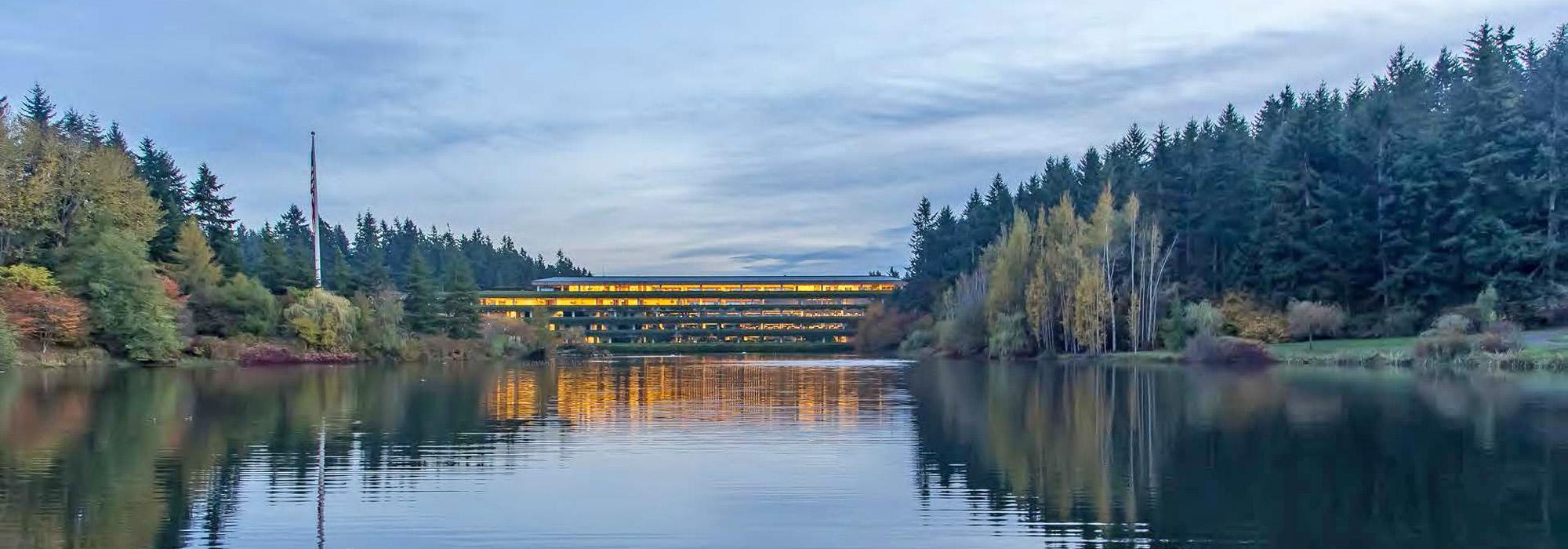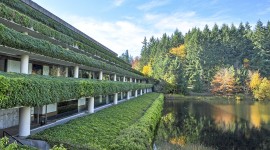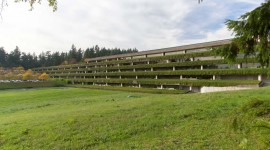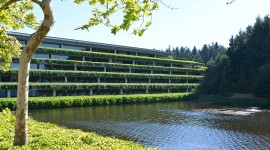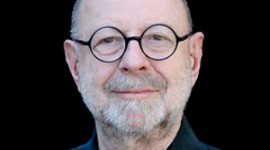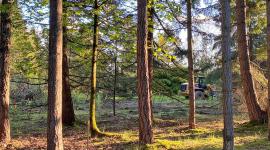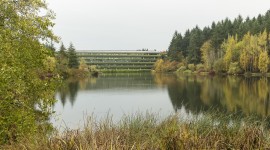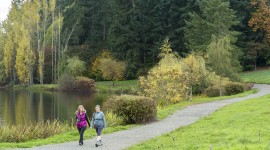Weyerhaeuser Campus Forest Land Deemed Unimportant
The Weyerhaeuser Corporate Headquarters in Federal Way, Washington, is considered one of the most significant works of landscape architecture of the twentieth century. It was included in a timeline of the period in Landscape Architecture Magazine on the centennial of the founding of the American Society of Landscape Architects (ASLA). Designed by Peter Walker, principal at Sasaki, Walker and Associates in association with architects Skidmore, Owings & Merrill, it was “the first corporate estate on the West Coast,” according to the landscape historian Louise Mozingo, “and [is] still the only one that rivals in scale and grandeur its East Coast and Midwest counterparts.” Today, Weyerhauser’s influence can be seen in later corporate landscapes, as well as the field of landscape architecture more broadly.
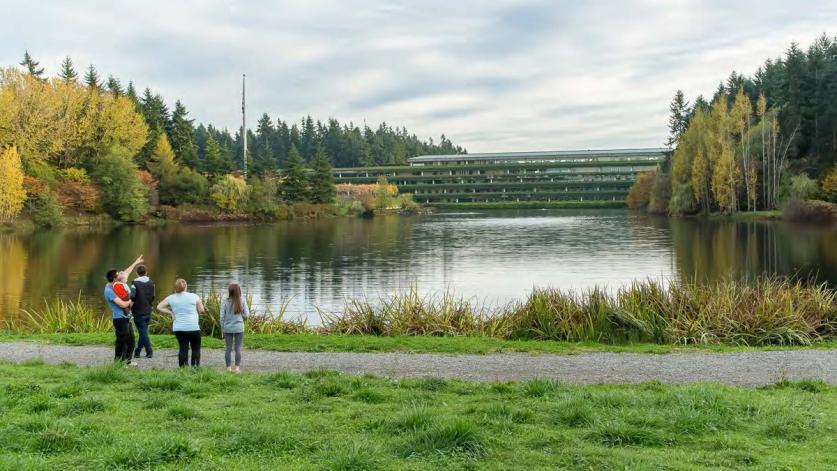
However, the campus is facing an existential threat with the loss of some 32 acres of woodland for the proposed construction of two enormous warehouses totaling more than 439,000 square feet (an additional three warehouses totaling 1.5 million square feet on 135.6 acres are also proposed). Local officials have made “Determinations of Nonsignificance,” for two woodland areas near the main building where Warehouses A and B are proposed. This antiseptic phrase means the woodland has been deemed unimportant and construction of the warehouses can move forward. Campus advocates, including Save Weyerhaeuser Campus, are seeking to overturn the “Determinations of Nonsignificance.”
In fact, the meticulously sculpted woodlands, designed forest edges, and the network of trails running through them, are elemental to the design and identity of the campus. This 260-acre wooded site was the headquarters of Weyerhaeuser from its completion in 1971 until 2016. The multi-billion dollar company manages millions of acres of forests for timber and other products. Its administrative building tipped the “high-rise” on its side and integrated it into a gentle swale to minimize its size and create the effect of a dam on a man-made lake. Certain aspects of the design draw on the Deere & Company Administrative Center in Moline, Illinois, a modernist masterpiece designed by Eero Saarinen, Hideo Sasaki (Walker’s East Coast partner), and Stuart Dawson. Like that headquarters, Weyerhaeuser’s administrative building sits in a kidney shaped area defined by surrounding roads. Both places are surrounded by wooded areas, centered on a lake, and strongly reference historic Japanese landscapes. Both are not just places of work; their landscapes provided a place for passive recreation and served as a tool for communicating with the public.
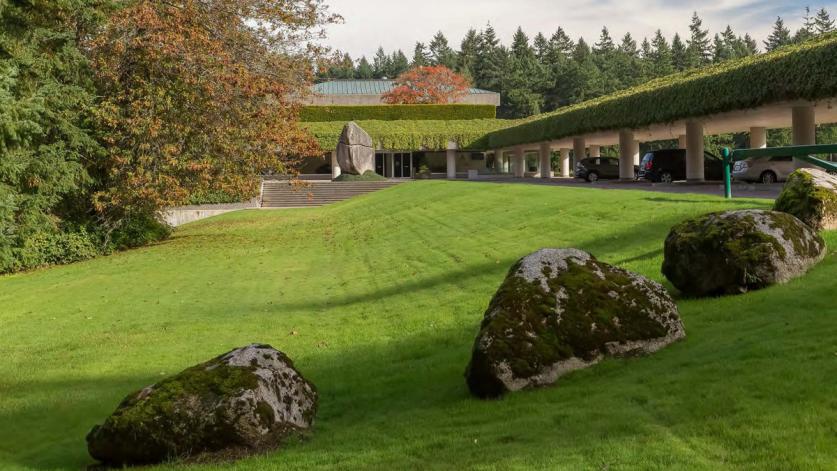
However, the message conveyed by the two landscapes could not be more different and Weyerhaeuser’s forested areas play a key role in communicating this message. The Deere & Company campus, completed in the early 1960s, communicated modern man’s ability to control the environment. It showcased the potential of the mown lawn—made possible by its tractors. At Weyerhaeuser’s campus, completed shortly after the first Earth Day, a more naturalistic forest comes right up to the building itself. Mozingo writes that “by reforesting the site, the timber and forest products company was repositioning its corporate image, in part to reflect the more considered forest practices that it was implementing on its properties.” She notes other companies like Frito-Lay and Merck similarly used their corporate estates to exhibit environmental consciousness in the decades that followed.
Another thing that set Weyerhaeuser’s campus apart was how Walker transformed the suburban parking lot, which is not typically an outlet for artistic expression, into a sculptural composition to experience as a driver, pedestrian, or viewer from an adjacent area. Each level of the building has its own parking lot terrace with formal rows of sycamore trees that funnel pedestrians towards the building. The building itself is covered in light green vines that match the sycamores during the summer months and contrast with the darker evergreen forest beyond. In autumn, the allées of sycamores become yellow lines highlighting the asymmetrical earthwork.
Walker’s design for Weyerhaeuser was very influential. In fact, seven years after completing the campus, Walker was hired to head the landscape architecture program at Harvard’s Graduate School of Design, where he was the leader of a movement that sought to create functional and meaningful land art that served a social function. The approach Walker brought to the Weyerhaeuser Campus transformed the field of landscape architecture and dominated it for decades. It was echoed in later works by designers like Martha Schwartz, George Hargreaves, and Walker himself.
The current proposal would impact the way the forest conveys meaning and the socially functional earthwork as well. One of the proposed warehouses, Warehouse B, would be 45 feet tall. Currently, only a very narrow strip of trees would be preserved between key paths/drives and the new warehouses. In some places, they are proposing only one line of trees between the warehouse and major paths, drives, and lawns. And the plan treats the area where Warehouses A and B are being proposed as an empty lot ready to be developed.
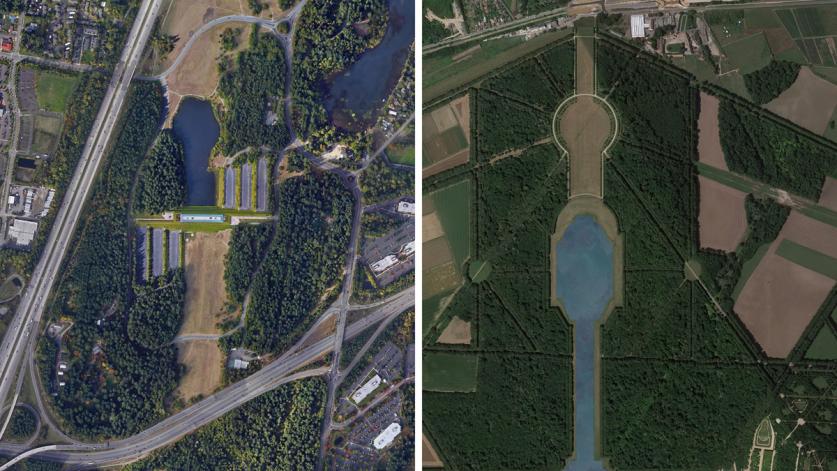
This forested area where Warehouses A and B are proposed is no more an empty space ready to be filled than the forested areas around the Grand Canal at Versailles are empty. It is an essential part of this historic landscape. The narrow strips of trees proposed would not adequately block views or buffer noise. They would destroy the entry experience intended for the site, which was about moving through a forested area. And most importantly, Warehouse B as proposed would also completely throw off the artistic balance of this masterpiece of landscape architecture. The possibility of building on part of the site was considered under Sasaki, Walker and Associates’ original plans but a much larger area of trees would have been preserved as part of the landscape composition of the headquarters building under that plan.
The City of Federal Way should use any authority it has to prevent development on the forested areas directly adjacent to the main headquarters structure and its artfully designed parking lots or limit that development to the area where development was historically proposed. If development does occur, ideally, it should be development that is compatible with reuse of the former headquarters building and not warehouses. The city should use any tools it can to ensure that a wider buffer is preserved between new development and key parts of the campus, including existing lawn areas, pathways, and Weyerhaeuser Road. This significant historic landscape should be treated as a part of our nation's cultural heritage and not be diminished.
Dan Jost is a research assistant with the Natural Learning Initiative at North Carolina State University, where he is pursuing a Ph. D., and a former writer and editor with Landscape Architecture Magazine.



